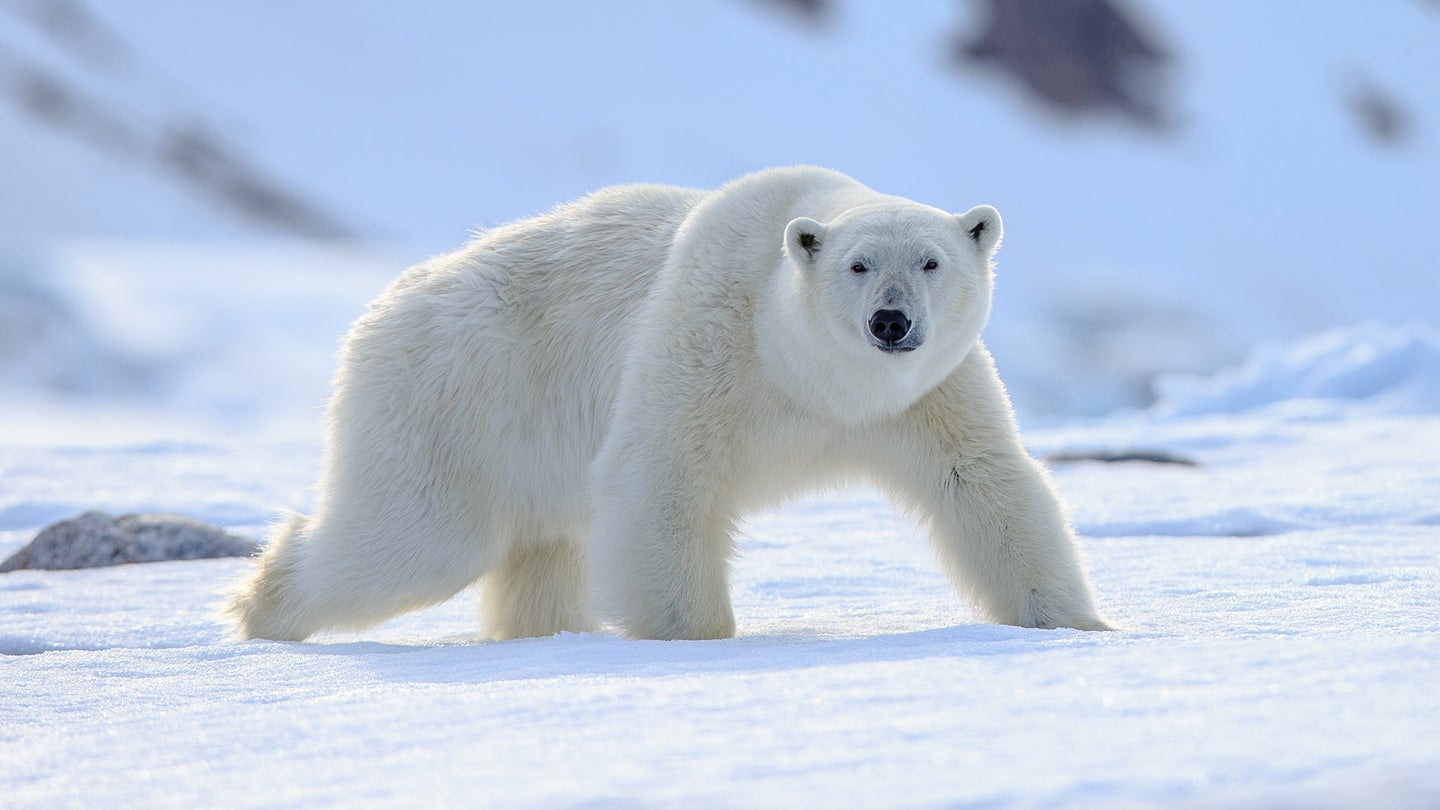World’s First Polar Bear Death from Bird Flu Confirmed

A polar bear near Utqiagvik, Alaska was found dead after ingesting bird flu. Vaclav/Adobe Stock
The most recent strain of the highly contagious H5N1 bird flu—which broke out in North America two years ago—has now killed a polar bear near Utqiagvik, Alaska.
While this bird influenza has infected other bear species, it is the first reported case of a polar bear contracting the disease and dying, according to an interview by the Alaska Beacon with Anchorage-based state veterinarian Dr. Bob Gerlach, who believes the bear ingested the virus when scavenging on infected bird carcasses.
Over the past two years, avian influenza has been detected all across the country in a variety of migratory waterfowl species, as well as other birds and mammals. Alaska, where the polar bear was found, has seen over 300 detections of avian flu in wild birds since 2022, according to the USDA, and it is possible that other polar bears have been infected.
Due to the remote locations where polar bears live, however, it is difficult for Alaska’s biologists and wildlife managers to know whether or not other bears have died from the virus. “If an animal dies, especially in the wild up here, it can be scavenged rather quickly by other animals. And so it really is a challenge, trying to find these cases,” Dr. Gerlach said in an interview with the Telegraph.
Alaska also serves as a major migration corridor for many of North America’s migratory birds. “Alaska is a catchall area for birds from North America or the Americas, as well as from Asia,” according to Gerlach. This makes the region a potential hotspot for future outbreaks as birds from all over the world cross paths there.
What originally began as a major concern for waterfowl populations and waterfowl hunters is now turning into a broader issue as more mammals continue to become infected and die. Polar bears, which were listed as threatened under the Endangered Species Act in 2008, now face yet another hazard with the avian flu. The ability of this virus to kill large animals like mountain lions, grizzly bears, and now polar bears shows just how lethal it can be.
Though the risk of contracting avian influenza is low for humans, there is concern that the virus could mutate in the future and pose a greater threat. But for now, the focus remains on mitigating the spread of H5N1 bird flu throughout migratory waterfowl, other birds, and mammals.
The post World’s First Polar Bear Death from Bird Flu Confirmed appeared first on Field & Stream.
Articles may contain affiliate links which enable us to share in the revenue of any purchases made.
